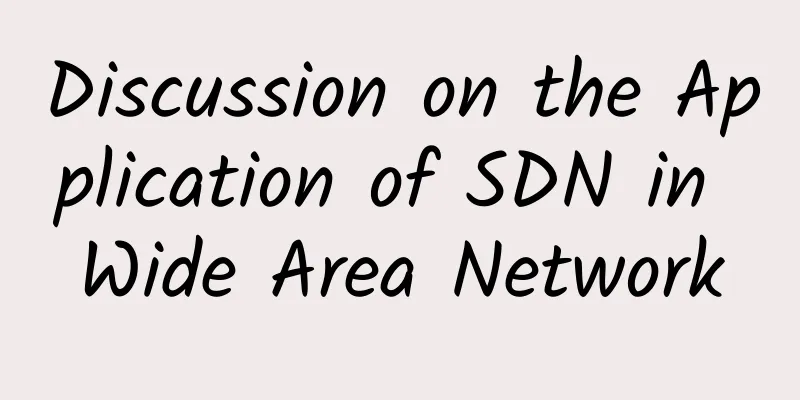Do you know how wireless networks developed?

|
MediaTek recently released its flagship 5G mobile chip, the Dimensity 9200. The latter not only supports 5G networks, but also future WiFi 7 wireless connections. Therefore, it is a WiFi 7-ready chip. Ordinary users do not know what advantages the new technology has. For example, how many people know the difference between WiFi 7 and previous standards? To clarify this, we need to understand some terminology. What is WiFi ProtocolFirst, there are different WiFi protocols. In this regard, WiFi 7 saw a significant change in WiFi protocols. Most people have heard of protocols like 802.11n, 802.11ac, and 802.11ax, even without knowing what they are. We realize that the average user has no idea what these numbers and letters mean. In 2018, the WiFi Alliance designated the 802.11ax standard as the sixth generation of WiFi technology. In addition, it made the naming of WiFi protocols simpler. In other words, they decided to make the WiFi protocol easy for ordinary users to understand in seconds:
Therefore, looking at the names of WiFi protocols, users will realize which one is newer and theoretically better. We will introduce the key specifications of the above WiFi protocols. WiFi 4It was released in 2009. WiFi 4 is a significantly improved version of the WiFi protocol compared to its predecessor. WiFi 4 is the first WiFi technology to work in both the 2.4GHz and 5GHz bands. Its transmission speed can reach 600Mbit/s. There are many advantages to 5GHz signals, and they cover a wide range of areas. They include fewer sources of interference and faster transmission rates. But 2.4GHz signals can still "pass through walls" better. 5GHz signals don't have much to brag about in this regard. In contrast, 2.4GHz terminal devices are cheaper. So when you need a router or other devices that do not require high transmission speeds, you already know what to choose. WiFi 4 can transfer data at speeds up to 600Mbit/s (600mbps). Simply put, it has a download speed of 600 megabits of broadband. As you can guess, this is a theoretical speed. In reality, no WiFi 4 device can achieve this effect. WiFi 5WiFi 5 was released in 2013. It introduced wider RF bandwidth and higher-order modulation technology. At the same time, the transmission speed is up to 1.73Gbps. Subsequently, the 802.11ac wave 2 standard was released in 2015. They made beamforming and MU-MIMO functions more popular. It should be noted that WiFi 5 only supports terminals in the 5GHz band. That is to say, this version of the WiFi protocol further improves the transmission rate of WiFi, providing higher download speeds for multiple users. Note that it only optimizes the downlink, not the uplink. WiFi 6Compared with WiFi 5, WiFi 6 achieves a 4-fold increase in network bandwidth and a 4-fold increase in the number of users. In addition, it can work freely on both 2.4GHz and 5GHz frequency bands. In terms of Internet speed, the impact on ordinary home users is not significant. Nowadays, the upper limit of home broadband in most cities is 1000 Mbps. WiFi 5 is also enough to control the speed of gigabit broadband. The number of simultaneous users has a certain impact on home users, but not much. The overall performance may deteriorate due to the number of smart home controllers, and the number of smart home appliances is growing every day. The number of smart home appliances is growing every day. If before, there were only a few smartphones and PCs connected to the home network, now there are ten or even twenty or more lighting controllers in the house. But a smart home does not necessarily need WiFi 6. In addition, many smart home appliances are connected to a so-called "master controller". The latter is then connected to the home network. If so, the wireless router only sees a device that is directly connected to the network. We can’t say the same for enterprise users. They need high transmission rates and have many simultaneous users. Many enterprises have real needs for Gigabit networks or even higher standards. The number of devices connected to an enterprise WiFi network is much higher than that of home users. WiFi 5 cannot meet these needs. In addition to the WiFi 6 protocol, there is also a WiFi 6E protocol. WiFi 6E adds a 6GHz frequency band based on WiFi 6. The new frequency band has less interference and faster speed. WiFi 7WiFi 7 is still under development, but some early versions of the device are starting to hit the market. The goal of the WiFi 7 protocol is to increase the throughput of WLAN networks to 30Gbps or even 40Gbps and provide low-latency access. To achieve this goal, the entire protocol has been modified at the PHY layer and MAC layer. Due to many changes, the protocol will support 500+ simultaneous users per channel and provide download speeds twice as fast as WiFi 6, allowing users to download a 25GB 4K Blu-ray movie in seconds. It seems that the first users of this technology will be enterprises. For home users, this transfer rate is only needed when playing VR games or using some metaverse applications. |
<<: It’s time to issue 5G private network frequency licenses
>>: PTC acquires next-generation application lifecycle management company
Recommend
Let's talk about WiFi6 security technology
1. WiFi6 Overview In 2018, in order to better bui...
When you are with your friends and family, do you have to pass on the WiFi password by word of mouth? It’s not safe!
It's Chinese New Year! The Year of the Ox is ...
ProfitServer Atlanta/Singapore VPS 50% off, unlimited traffic starting at $2.88 per month
ProfitServer sent an email about Christmas promot...
LisaHost: Singapore/Taiwan/US ISP residential IP hosting starting from 68/month, AS4837/9929/CN2 GIA lines available
Lisahost was registered in Hong Kong in 2017. It ...
The latest UN report says that 30% of the world's population has never been online
According to a report by the British "Guardi...
Blockchain subverts the underlying architecture of the financial industry and opens a new era of value interconnection
Blockchain is essentially a decentralized databas...
Do you know how much power 5G actually consumes?
5G is one of the hottest topics at the moment, an...
Stop questioning the usefulness of 5G. 5G is not primarily intended for human use!
With the official release of 5G tariff packages b...
Finally someone explained the role of OSI and TCP clearly
I have mentioned the OSI reference model and the ...
What will happen when 5G network falls in love with public cloud?
[[410935]] Recently, AT&T, the second largest...
Working principles of physical layer/data link layer/network layer
[[279942]] Physical Layer Physical layer equipmen...
An automation-first approach to network predictability
An automation-first approach is one of the most e...
What impact will the Internet of Things have on corporate business?
Nowadays, whether people like it or not, the Inte...
Why is “open source” so important to the Internet of Things?
For the development of the Internet of Things, &q...
National Day promotion: CUBECLOUD 30% off/Olu Cloud VPS 20% off/Asia Cloud 20% off/Varidata Hong Kong Cloud Server 50% off
73 years of prosperity, building dreams of thousa...









